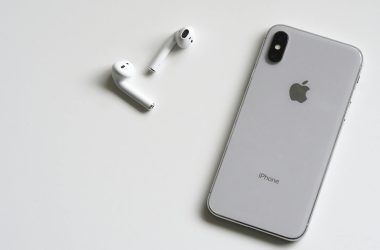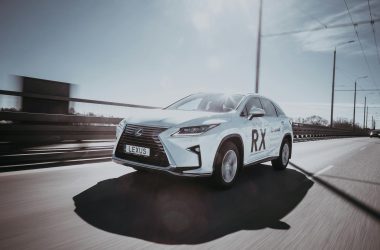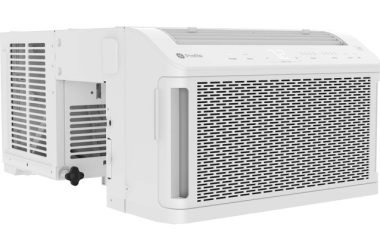
Contents
- Definition
- Advantages
- Disadvantages
- How to wind power your home
- Should You Wind or Solar Power Your Home?
- Environmental and Ecological Impact of Wind Turbines
- World Wind Power Generation Capacity
- Intermittency, Variability and Backing Up Wind Farms
- Blade Strength, Weight, and Performance of Wind Turbines
- Anatomy and Manufacturing of Wind Turbine Blades
- Offshore Wind Turbines
- Wind Power Density
- Capacity Factor
- Safety
- Lightning Safety
- How Wind Turbines Deal with Excessively High Wind Speeds
- Energy Payback Time
- Average Wind Speed by City (United States)
- Parts of a Wind Turbine
Wind Turbine Basics
What Is a Wind Turbine?
A wind turbine is a rotary machine with an alternator or DC (direct current) generator (dynamo) that generates wind power using the kinetic energy of wind, the blades are either attached to low-rpm alternators which generate electricity more efficiently than others when turned at a low speed, or via gear to normal alternators, which is usually the case.
Or they are attached to a large gear which turns another small gear attached to the alternator, so that the small gear spins at a much higher speed, this is necessary because the blades turn slowly.
The latter is called an overdrive gear set up. Alternators generate electricity via electromagnetic induction. When wind direction changes, a sensor detects that and activates the yaw mechanism to turn the nacelle and blade assembly to face the wind. They can be used with energy storage mediums such as: pumped hydroelectric storage, compressed air, batteries, ultracapacitors/supercapacitors and fuel cells.
Small-scale wind turbines can be home-built, and without much money. Search for “DIY Wind Turbine” in Google. There are many different types of turbines, some are three-bladed, while others are of the horizontal axis (HAWT) type. Some of the vertical axis (VAWT) type, have multiple sets of blades, are airborn (they are kept in the air with tanks which are filled with certain gases such as helium). There are also other designs which you can find by browsing the internet.
RPM: Revolutions Per Minute.
Low-RPM Alternator/Dynamo: A low-RPM generator is one which is designed to efficiently generate electricity when spun at low speeds. Wind turbine blades turn at low speeds, therefore, they need low RPM generators or overdrive gears to compensate for that.
Advantages Of Wind Turbines
- The energy source is free, renewable, and inexhaustible.
- It isn’t necessary to purchase fuel for them.
- They release no pollutants into the atmosphere, nor do they cause global warming.
- They can be cost-effective in the long run (depending on their location, and how they are used).
- The cost of electricity from a wind turbine remains fairly consistent over its lifetime because there are no expenses apart from maintenance and insurance associated with the turbine, so it is not susceptible to cost fluctuations, unlike fossil-fueled generators.
- Farmers can benefit from land lease payments for turbine installations on their land.
- Use of these turbines as an alternative to fossil fuels means that less fossil fuels will be used to generate electricity, causing fossil fuels to last longer and helping to mitigate increases in demand which normally result in an increase in their cost.
- Low water requirement of 0.001 gallons (0.004 litres) per kWh of electricity generated.
- Safety: The turbines are not powered by explosive or flammable fuels.
- They do not require continuous mining after construction for solid fuel to power them as nuclear and coal power plants do. Mined land is often destroyed and not usable after it is depleted.
Disadvantages Of Wind Turbines
- They are large.
- They have a high initial cost.
- Wind blows intermittently, its velocity varies, therefore, an energy storage medium needs to be used with them if they are to be used independently. Read about energy storage mediums on the energy storage page.
- Ice can accumulate on wind turbine blades. However de-icers can melt it off.
Uses Of Wind Turbines
They can be used to directly power:
- Electric water pumps for pumped hydroelectric storage or to pump water into storage facilities.
- Heating elements for water heating.
- Certain refrigeration processes.
- Compressors.
- Fans.
- Electrolysis to produce hydrogen and oxygen.
- Aluminium electrolysis.
How Do I Wind Power My Home?
First of all, you need to determine how much electricity you consume monthly and daily before you can determine the cost of a wind turbine set up for your home. You would not use a wind turbine to directly power your home, but you would use it to charge an energy storage system such as a bank of batteries, since that is capable of providing electricity without sudden interruptions or fluctuations. In other words, batteries act as a buffer for variable and intermittent power.
Second, the batteries would supply electricity to a device called an inverter. An inverter converts DC current which is what batteries provide into 120 or 240 volts AC which is what standard appliances require.
Third, batteries do waste some energy, so you need a wind turbine that generates up to twice what you thought you would need to account for the inefficiency of the lead-acid batteries you will use. Companies or contractors may just offer other more efficient options such as lithium-ion batteries, and when using those, you would need much less additional wind power generation capacity.
Fourth, there are particularly windy and particularly stagnant periods as well as seasons (winter and summer for example). This means that you could either end up wasting excess power or with power shortages unless you have extra batteries and a very large turbine.
A much cheaper option is a transfer switch. A transfer switch can switch your appliances over to the electricity grid when there is a shortage of wind power. This is a very convenient way to eliminate what I would call power shortage anxiety.
Please ignore average costs estimates of how much wind turbine systems usually cost, because their costs vary too much for an estimate to be helpful to you. You need to find out how much the wind power system would cost you. The main elements of the cost of a wind power system are:
- Wind turbine.
- Batteries for off-grid systems.
- Inverter for off-grid battery systems or grid-tie inverter.
- Installation of the turbine, transfer switch and electricians’ fees.
Grid-Tie Wind Turbines (Net Metering)
Grid-tie wind turbines are connected to and supply power to the electricity grid without batteries using a grid-tie inverter under a “net metering” scheme. The turbine would not directly power your house, but it would be used to offset your electricity consumption so that your electric bill can be lowered. This is not always permitted. Please contact your power company for more information. One significant advantage of such an arrangement is that you don’t have to use batteries.
Should I Wind or Solar Power My Home?
You should not purchase a wind turbine unless you first check a wind resource map that tells you whether or not your area is windy enough for a wind turbine to make financial sense.
As you can see on the wind resource map below, the east and west coast areas are blue and red. Blue means superbly windy, and 6 means outstandingly windy, which is not quite as good, but still exceptional. Blue is the best.
If you please, and have the money to do so, you can set up an anemometer at the altitude of the wind turbine you may be contemplating, or maybe even others at different heights for other turbines you may be contemplating to determine what the wind speeds are and please take note of wind speed variations throughout the month and all throughout the year, and then make your decision.
Wind turbines do not pay for themselves in areas which are not particularly windy. Solar panels at least will generate power as long as the sun is shining, whether it is sunny or overcast, which is important.
What Is The Environmental And Ecological Impact Of Wind Turbines?
The environmental impact of wind turbines is low (relatively speaking), because they are constructed using non-toxic materials (usually), and they do not release/emit any harmful substances. Wind turbines seldom hit birds, but their impact on bats is more significant. The pressure drops caused by moving wind turbine blades is harmful to bats, one solution to this problem is to use a bat radar to scare them away from the turbines.
Materials used for construction (only some of these are common):
- Blades: Composite Materials or Carbon Fiber.
- Tower: Steel.
- Ceramic Materials.
- Generator Coils: Copper.
- Yaw: Copper, iron, aluminium.
- Generator Core: Iron.
- Power and Control Electronics: Semiconductor materials such as silicon and germanium.
- Tin.
- Other polymers.
Global Wind Power Status
World Wind Power Capacity
World wind power capacity is how much electricity all of the wind turbines in the world combined can generate.
^ means increased.
2004: 46.5 GW, or 46,500 MW.
2007: 74.2 GW, or 74,223 MW. (^ 27.7 GW)
2008: 120.7 GW, or 120,798 MW. (^ 46.5 GW) [Source]
2010: 160 GW, or 160,000 MW. (^ 39.3 GW). [Source: Page 2076 of this PDF]
Offshore Wind Turbines
Wind turbines may be placed offshore where wind speeds tend to be much higher and more steady than they are on land. Normally, this would translate to cheaper wind power, because if a land wind turbine generates a certain amount of electricity at average wind speeds of 14 MPH, then if that same turbine were moved somewhere with average wind speeds of 18 MPH, it would generate more electricity.
Relationship between weather and cost of wind power: If the wind turbine costs $1 million and is 1 MW, then the cost per (peak) watt is $1. but, it would only generate 1 MW at the wind speed specified by the manufacturer, and that wind speed is usually high. So sometimes it may be half that speed, or even a quarter.
Or on good days it may be 3 quarters of that or more. Anyway, if it generates 1 MW at a wind speed of 28 MPH but the wind speed decreased to the point where it generated 0.5 MW, the cost per watt would be twice as high, which is $2 per watt (this is not quite accurate, but for the sake of intuition it is just to show you that less wind = less financial return and hence a higher overall cost per kWh).
Why not put wind turbines offshore?: Sadly, offshore wind farms are more costly than land ones, therefore we cannot currently enjoy the financial benefit that we would expect to from higher offshore wind speeds, but, researchers are working on this and making progress. The cost of maintenance for offshore wind turbines is a major problem and it has been addressed by the development of gearless wind turbines, which require less maintenance. This does not necessarily mean that gearless turbines are best for use on land.
Typical wind turbines are geared (meaning that the turbine hub is used to turn a gear which turns another gear at a different speed from itself). Securing wind turbines offshore: Offshore wind turbines can either be secured by burying the tower deep in the ocean floor, if the water is shallow, or by setting up a floating platform that it stands on which is tethered to the ocean floor via steel cables in deepwater. Since offshore locations have a greater wind power density, I conveniently put the wind power density section right below this one.
Wind Power Density
This is defined as the amount of wind power available in a particular area. The higher the wind power density, the lower the cost of wind power in that area, and the higher the power output of wind turbines will be. Wind power density is divided into seven classes: At a height of 50 metres (164 feet):
- 2 – 12.5 mph (5.6 metres per second (m/s)) – 200 W/m2 (watts per square metre)
- 3 – 14.3 mph (6.4 metres per second) – 300 W/m2
- 4 – 15.7 mph (7.0 metres per second) – 400 W/m2
- 5 – 16.8 mph (7.5 metres per second) – 500 W/m2
- 6 – 17.9 mph (8.0 metres per second) – 600 W/m2
- 7 – 19.7 mph (8.8 metres per second) – 800 W/m2
- 7 – 26.6 mph (11.9 metres per second) – 2000 W/m2 (the one above is in the same class which is 7, this is not an error)
Capacity Factor
The capacity factor of a wind turbine is the average percentage of the turbine’s rated power it generates in a certain geographic location. If a turbine is rated by the manufacturer to generate 1 MW (at a fairly high wind speed) and the capacity factor in a certain area such as the United States is 35% (it varies in the U.S too, but this is the average, which is not as relevant as that of the area the turbine is installed in), then the turbine generates an average of 350 kW. This means that the turbine generates an average of 35% of it’s rated electricity generation capacity. Capacity factor is important because the lower it is, the higher the cost to generate electricity with the turbine.
Safety
Wind Turbine Lightning Safety
Megawatt-scale (or large wind farm turbines) wind turbines are equipped with lightning receptors on their blade tips due to the fact that the blades themselves are constructed of a composite material which is not electrically conductive. The metal receptors transmit lightning through wires into the ground to decrease the likelihood of the composite material being struck.
Excessively High Wind Speeds
Wind turbines have their limitations and they each have a maximum wind speed that they can operate at safely without damage. Due to the fact that wind speeds sometimes exceed this limit, wind turbines have a “cut-out” speed. A cut-out speed is the speed at which the turbine is programmed to shut down or activate devices that slow it down such as brakes. [Source].
What Is The Payback Time Of Wind Turbines?
The energy payback time of a wind turbine is the amount of time it takes for it to generate as much electricity as was used to manufacture it. The financial payback time of a wind turbine is the amount of time taken for a wind turbine to save you the amount of money that you spent on it.
The financial payback time of a wind turbine varies significantly with the size, cost, and efficiency, and especially the geographic location of it.
Energy Payback Time of Wind Turbines
Average: 3 to 8 months.
What Are The Parts Of A Wind Turbine?
- Nacelle
- Blades
- Hub
- Rotor
- Alternator or Dynamo
- Gearbox
- Power Electronics
- Yaw
- Brakes
- Tower
Article Glossary
- Dynamo: A direct current generator.
- Alternator: An alternating current generator.
- Generator: I usually use this term to refer to the actual electricity generating device that is turned by a turbine, instead of the entire turbine + generator assembly. Site-wide, this term is used to describe any device that generates electricity, even without movement.
Further Reading
University Of Texas: How Direct Current Generators Work.
Georgia State University: How Alternating Current (AC) Motors And Generators Work.





Comments 1